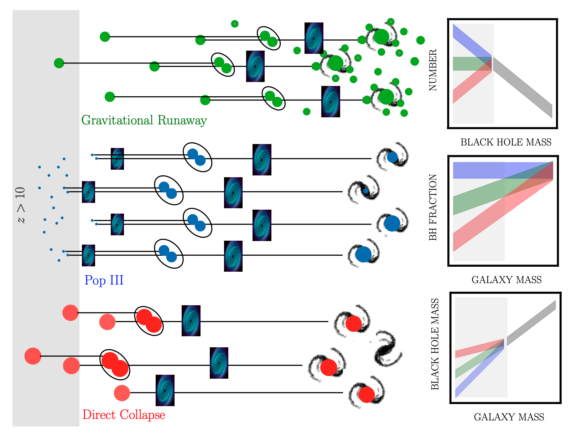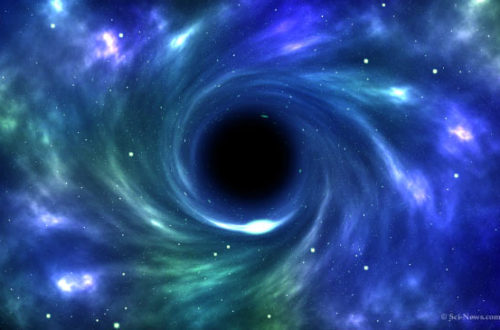Often in these blog posts we talk about two things. At one end of the spectrum, there are supermassive black holes that exist in the centre of galaxies (106 – 1010 M⊙). And at the other, stellar mass black holes (∼ 10 M⊙), which are the endpoints of the evolution of the most massive stars and can be found orbiting another star, forming a black hole X-ray binary (BHXB).
But what about the poor forgotten black holes with masses between these two classes? After all, it makes sense to think that, at some point in cosmic time, black holes between 10 and 106 M⊙ had to exist, in order to evolve to the supermassive black holes that we see today. These are the so called Intermediate-mass black holes (IMBHs).
Currently there is no concrete evidence for black holes with masses larger than ∼ 100 – 105 M⊙, although there are some important candidates in this mass range. Finding IMBHs is of interest for many reasons. For instance, extending scaling relations to this mass regime may provide unique insight into the evolution of black holes and the importance of feedback for dwarf galaxies. In addition, demographics of black holes at lower masses will help understand the dynamical evolution of dense stellar systems. Intermediate-mass black holes will also be targets for gravitational radiation for upcoming gravitational wave detectors in space, like the Laser Interferometer Space Antenna (LISA).
There are three primary theoretical channels for the origin of IMBHs or, in other words, for the seeding of supermassive black holes:
- Population III – It is expected theoretically that the first stars were quite massive, due to the inability of molecular hydrogen gas to cool. These are called Population III and such massive stars would likely end their lives as black holes with MBH ∼ 100 M⊙. There is the exception, however, of first stars in the mass range of 140 − 260 M⊙, that would explode as pair-instability supernovae and leave no remnant.
- Direct collapse – This corresponds to collapsing gas clouds that form a massive seed black hole without passing through all the phases of stellar evolution. The seed black holes formed have masses of MBH ∼ 104 – 106 M⊙, perhaps passing through a “quasi-star” phase. Note that this channel can only operate at very high redshift, since pristine gas is required to suppress cooling and fragmentation.
- Gravitational runaway – While normal single stars are not expected to produce black holes larger than 100 M⊙, it is plausible that repeated mergers in dense stellar clusters could occasionally produce IMBHs larger than 100 M⊙ in a gravitational runaway event. Two scenarios can be distinguished:
- Slow scenario – This scenario proposes a black hole of mass > 50 M⊙ forming as the remnant of a massive star. This black hole will then grow through mergers of mass-segregated black holes, resulting in ~ 103 M⊙ IMBHs in about 10% of massive globular clusters.
- Fast scenario – Sufficiently dense star clusters will undergo a collisional runaway of massive stars and the resulting product could eventually lead to the formation of an IMBH.
At the present day, differences in black hole mass functions, occupation fractions, and black hole-galaxy scaling relations may emerge from the different seeding channels that are described above (figure 1, right side). However, the challenge is to predict these differences: As the seeds evolve towards the present day, many unknown factors come to play; for instance, the seed black holes may suffer mergers (black ovals) or go through accretion episodes (blue accretion disks). The grey bars in the scaling relations show where observational constraints are not yet possible.

For a more detailed review on IMBHs and their ongoing searches I recommend reading Green et al. 2020.



